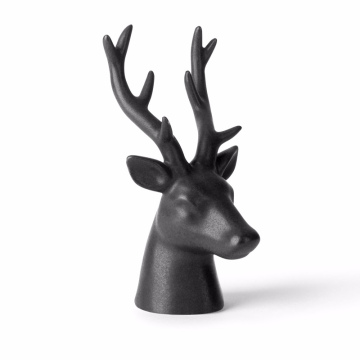The History of Chan Chan Yaki: A Flavorful Grilled Salmon Dish from Hokkaido
Chan Chan Yaki (ちゃんちゃん焼き) is a traditional grilled salmon dish that originated from the northernmost island of Japan, Hokkaido. This dish represents a combination of regional culinary traditions, the abundance of fresh seafood, and the simplicity of Japanese home-cooked meals. The history of Chan Chan Yaki is intertwined with the fishing culture and the seasonal rhythms of life in Hokkaido.
Origins of Chan Chan Yaki
Chan Chan Yaki is believed to have been born from the practical and flavorful cooking techniques of Hokkaido’s fishing communities. The island of Hokkaido has long been known for its cold, clear waters, which make it an ideal location for high-quality seafood. Specifically, salmon—a fish abundant in the region—has been central to the local diet.
The name "Chan Chan" is said to be derived from the sizzling sound made when the ingredients hit the hot grill or hot plate (chan-chan mimicking the sound of food cooking). Another theory suggests that the name refers to the quick and simple cooking method, which results in a dish that can be made easily by fishermen who would prepare it on open fires or portable grills while on fishing expeditions.
Originally, this dish was cooked communally on a large iron griddle or hot plate by fishermen or families gathered together. Salmon, often caught just hours before cooking, would be grilled along with a variety of seasonal vegetables, and then glazed with a flavorful miso-based sauce. The combination of fresh fish and local produce, along with the smoky, umami-rich miso sauce, became a staple of Hokkaido’s culinary landscape.
Culinary Evolution of Chan Chan Yaki
As the dish spread across Japan, Chan Chan Yaki evolved to become more accessible to the home cook, yet still retains the hallmark simplicity of its roots. It became a popular comfort food for families, not just in Hokkaido, but also throughout the country. The dish was typically prepared in a single-pan method, where the salmon and vegetables are cooked together, allowing the flavors to meld and create a rich, savory experience.
The dish’s focus on fresh, seasonal ingredients and its ability to be prepared quickly made it an ideal choice for busy fishermen, and later for home cooks who appreciated the straightforward preparation. While miso (fermented soybean paste) has always been a central ingredient, variations on the sauce and the vegetables used may differ depending on the season and the cook’s preferences.
Chan Chan Yaki and its Connection to Japanese Culinary Philosophy
At its core, Chan Chan Yaki exemplifies key aspects of Japanese culinary philosophy, including:
- Umami Balance: The miso sauce is rich in umami—the savory fifth taste that brings depth and complexity to the dish. The natural saltiness of the miso is perfectly balanced by the sweetness of the mirin and sugar, while the addition of sake provides a subtle alcoholic complexity.
- Seasonal Ingredients: Traditional Japanese cuisine values the use of seasonal, locally sourced ingredients. In Chan Chan Yaki, vegetables such as cabbage, carrots, bell peppers, and mushrooms are commonly used. These ingredients are often selected based on their seasonality, which ensures the dish is always fresh and flavorful.
- Texture Contrast: The dish combines a variety of textures—crispy skin on the salmon, tender fish flesh, and crunchy vegetables. These contrasts not only make each bite exciting but also show off the Japanese culinary art of balancing mouthfeel and visual appeal.
- Simplicity and Harmony: Like many traditional Japanese dishes, Chan Chan Yaki is an exercise in simplicity. The ingredients are sautéed, steamed, and grilled with minimal seasoning to highlight their natural flavors. The result is a dish that embraces the Japanese concept of shun (旬), meaning eating ingredients at their peak of freshness.
Chan Chan Yaki in Modern Times
Though its origins are humble and practical, Chan Chan Yaki has remained popular for its delicious flavor profile, quick preparation, and ease of cooking. Today, the dish is commonly served in restaurants specializing in regional Hokkaido cuisine and at home, particularly during the colder months, when the richness of miso and salmon offer a comforting meal.
The dish has also undergone variations in modern times, with chefs experimenting with the choice of vegetables or miso types. The grilled salmon may be paired with pickled vegetables, and some recipes even include a splash of citrus or sesame oil to add extra depth.
Why Chan Chan Yaki Deserves a Place in Your Culinary Repertoire
- Tradition Meets Simplicity: Chan Chan Yaki has retained its humble origins but has evolved to suit modern tastes, combining rich, hearty flavors with simple cooking techniques.
- A Flavorful Experience: The savory miso sauce, paired with the fresh salmon and seasonal vegetables, creates a depth of flavor that's complex yet comforting. The smoky essence from the grilling process gives it a unique twist.
- Healthy and Nutritious: The salmon is a great source of omega-3 fatty acids, which promote heart health, while the vegetables add fiber, vitamins, and minerals, creating a well-rounded dish.
- Quick, Easy, and Fun: Whether you’re making it for a family meal or sharing it with friends, Chan Chan Yaki is fun to cook and eat. The communal aspect of the dish encourages sharing and interaction, creating a joyous dining experience.




